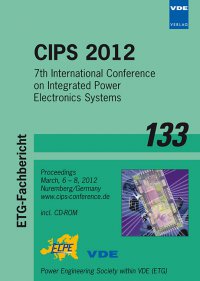Sintered Silver Joint Strength Dependence on Substrate Topography and Attachment Pad Geometry
Konferenz: CIPS 2012 - 7th International Conference on Integrated Power Electronics Systems
06.03.2012 - 08.03.2012 in Nuremberg, Germany
Tagungsband: CIPS 2012
Seiten: 6Sprache: EnglischTyp: PDF
Persönliche VDE-Mitglieder erhalten auf diesen Artikel 10% Rabatt
Autoren:
Wereszczak, Andrew A.; Vuono, Daniel J.; Liang, Zhenxian; Fox, Ethan E. (Oak Ridge National Laboratory, Oak Ridge, TN, USA)
Inhalt:
The sum of chemical and mechanical bonding limits the adhesive strength of die-attach and substrate-attach layers. This is also true for sintered silver joints whose development and employment are underway in the electronic packaging community. Chemical bonding is dictated by numerous parameters associated with the compatibility of the metallurgical bond of the two mating surfaces and the processing history that brings them together. However, the efficacy of mechanical bonding is likely affected by the topographies (e.g., roughness) of the two adjoined surfaces and also perhaps the shape of the attachment layer itself (e.g., circles, squares, and sizes thereof). In this study the mechanical bonding component is examined through the modification of the copper cladding surface on direct bonded copper (DBC) substrates, the shape of the silver pad attachment bonded to it, and the use of a joined "DBC sandwich" that facilitates their study. It was found that simple employment of both surface topography control and printed pad geometry can affect and improve shear strength of silver sintered joints, and that there is logic to perhaps hybridize their effects. This is an important observation as more future attention is devoted to joining constituents with larger areas (> 100 mm2) in electronic packages.


